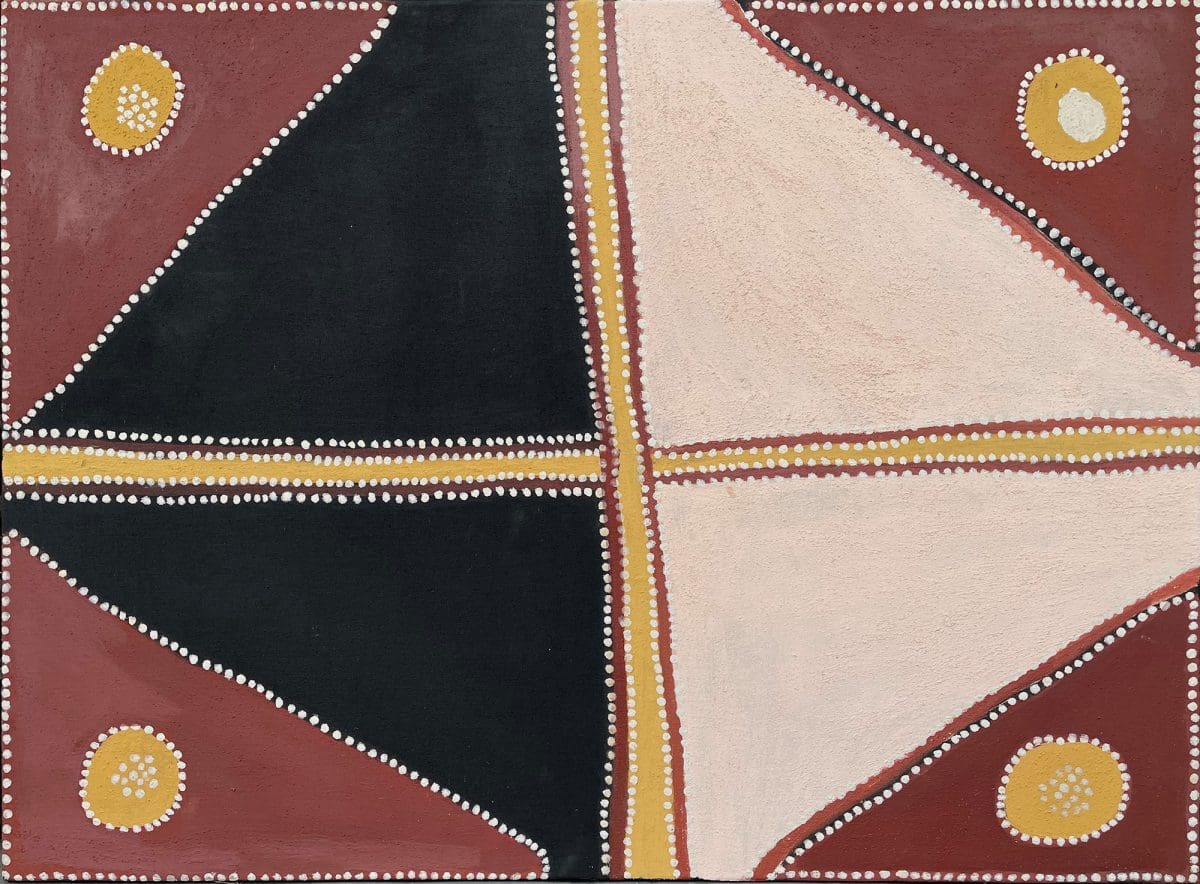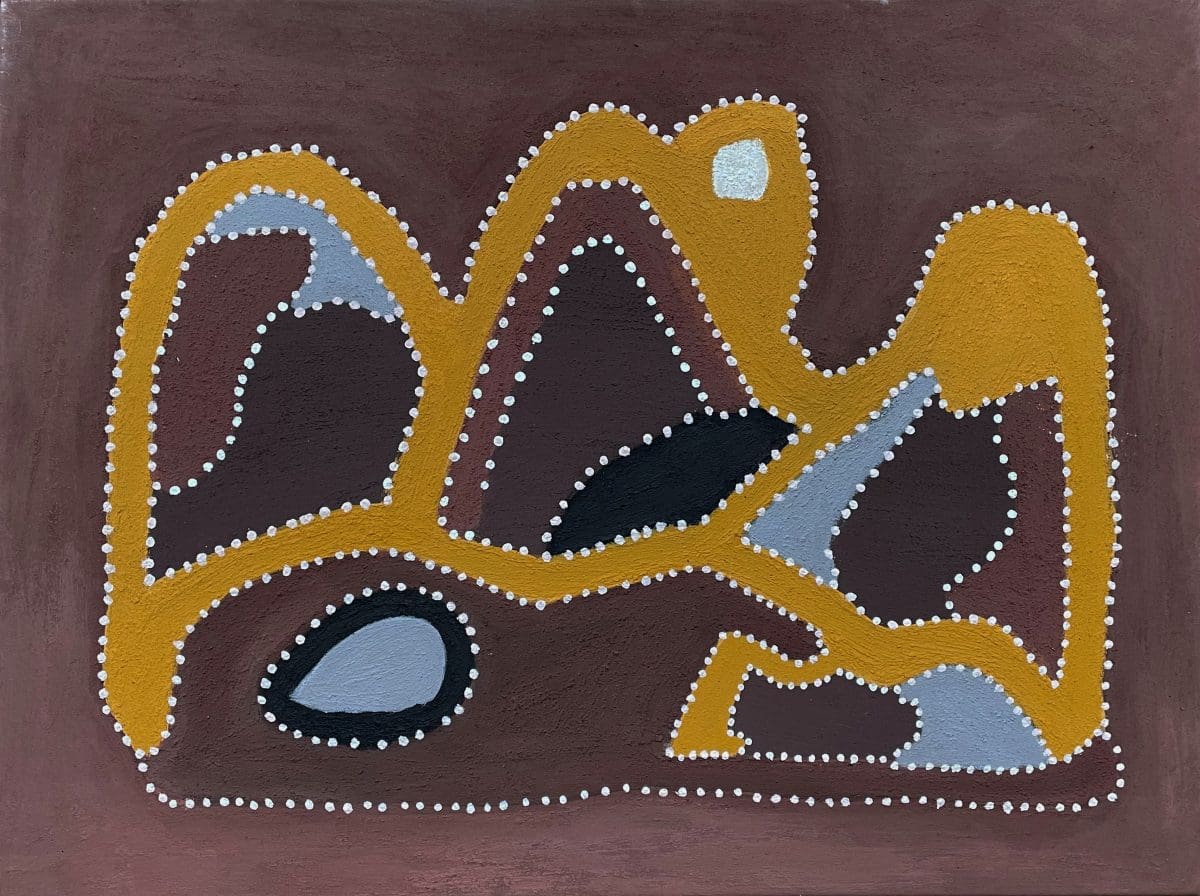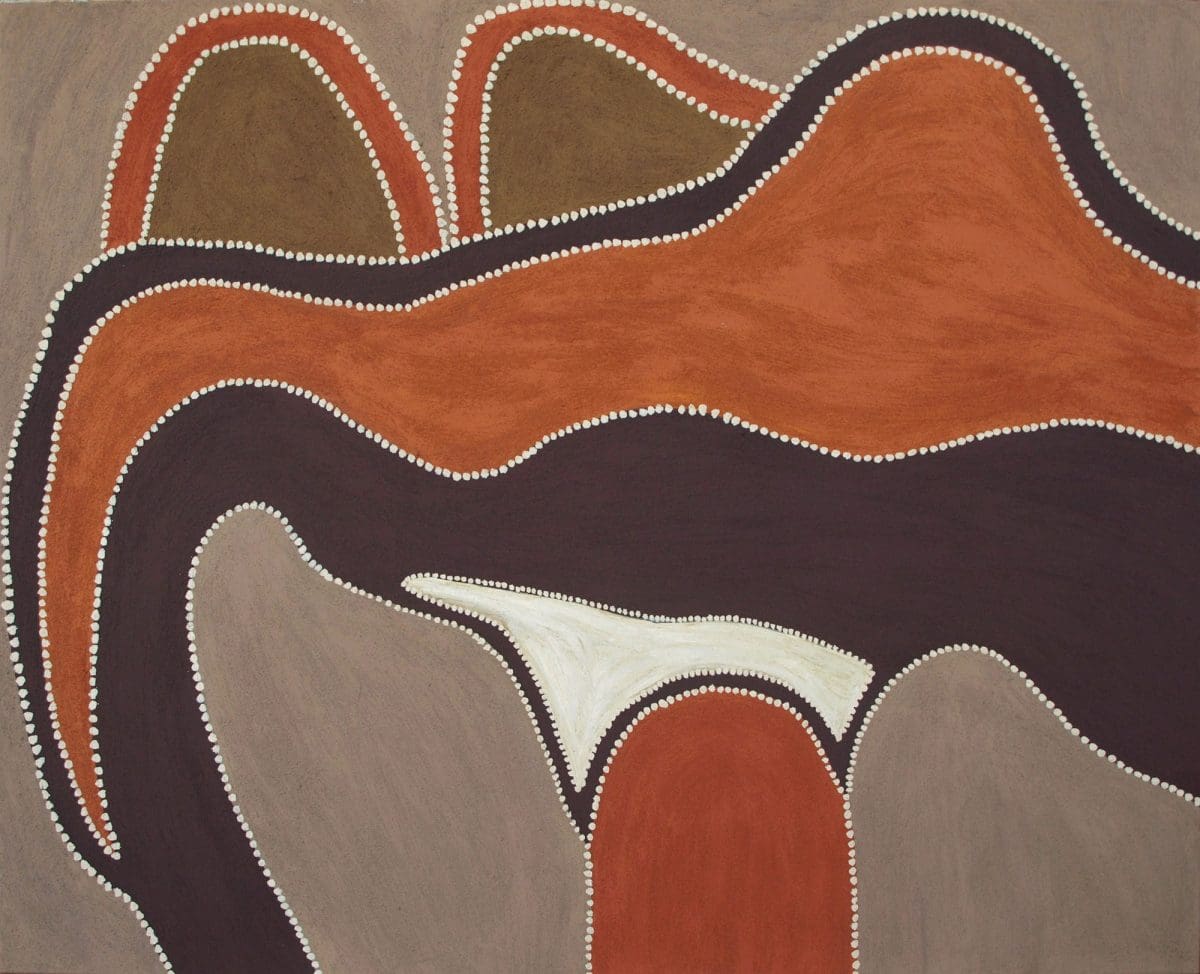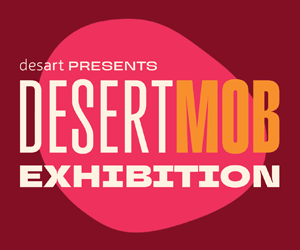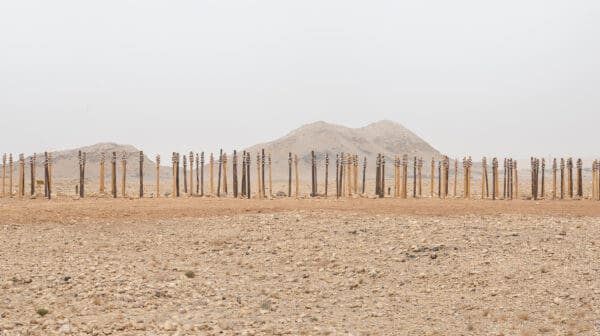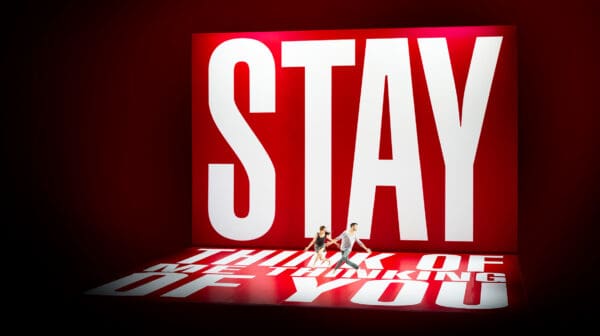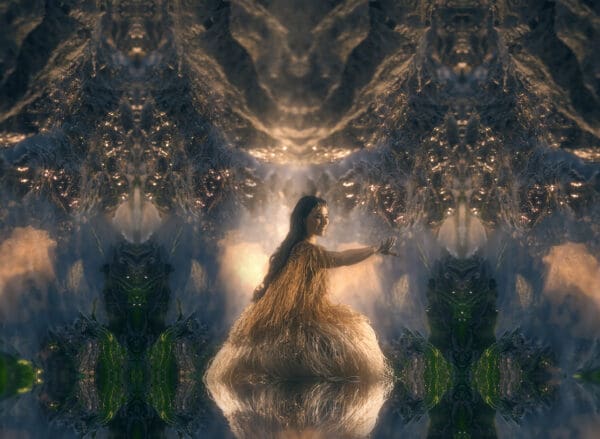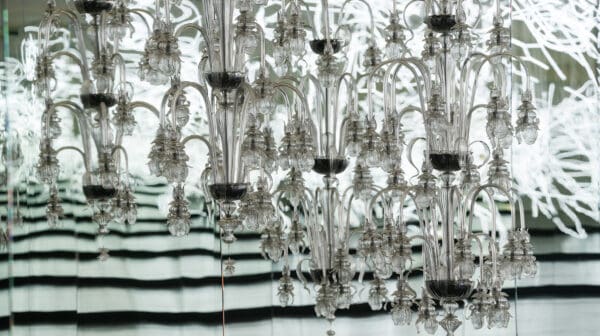Ochre is a natural formation of clay deposits and sediments collected from the earth, varying across white, yellow, orange, red and pink pigments. For tens of thousands of years, ochre has been significant for the cultural and artistic practices of the Warmun community in the East Kimberley region of Western Australia. As David Wroth, curator at Japingka Aboriginal Art, explains, “Although people often think of traditional Aboriginal art as having this connection to the ochre colours from the earth, there’s only a few groups of artists and communities who continue to use ochre pigments in their artwork.”
Ochre Painters of the Kimberley focuses on smaller works from formative and senior artists of the Warmun community including Jack Britten, Shirley Purdie, Queenie McKenzie, Beerbee Mungnari and Rover Thomas. Featuring more than 18 paintings made between the late 1990s to early 2000s, many works have never been publicly displayed until now.
All artists are united through their dedicated and innovative practices, each working with ochre sourced from Country. “The land is providing the materials that they paint with, and this is significant as most of the paintings are about such surrounding land,” explains Wroth. Each painting encapsulates the Gija cultural practice of recording landscape as well as revealing the rich personal histories from each contributing artist. “All of the works are connected between geology, the location of place, creation stories, and that particular individual artist’s private life,” says Wroth.
As the curator further points out, “The tradition of ochre painting is alive and well in this part of the country… it’s a living tradition. Even though the exhibited works are only 20-25 years old, they are certainly markers along a transition to see where the ochre paintings are going.”
Ochre Painters of the Kimberley
Japingka Aboriginal Art
24 February—22 March
This article was originally published in the January/February 2023 print edition of Art Guide Australia.





